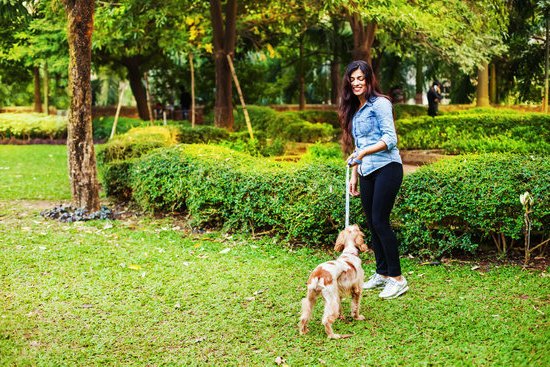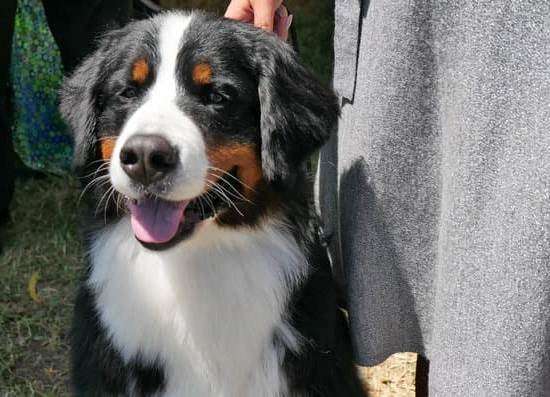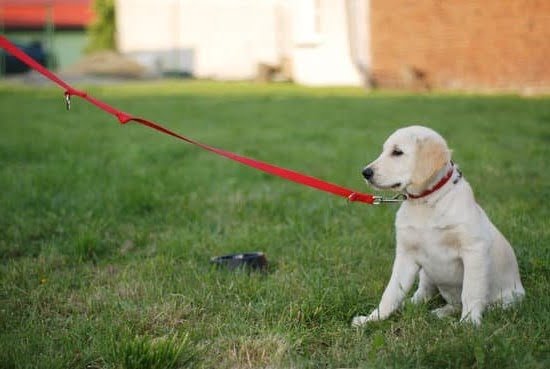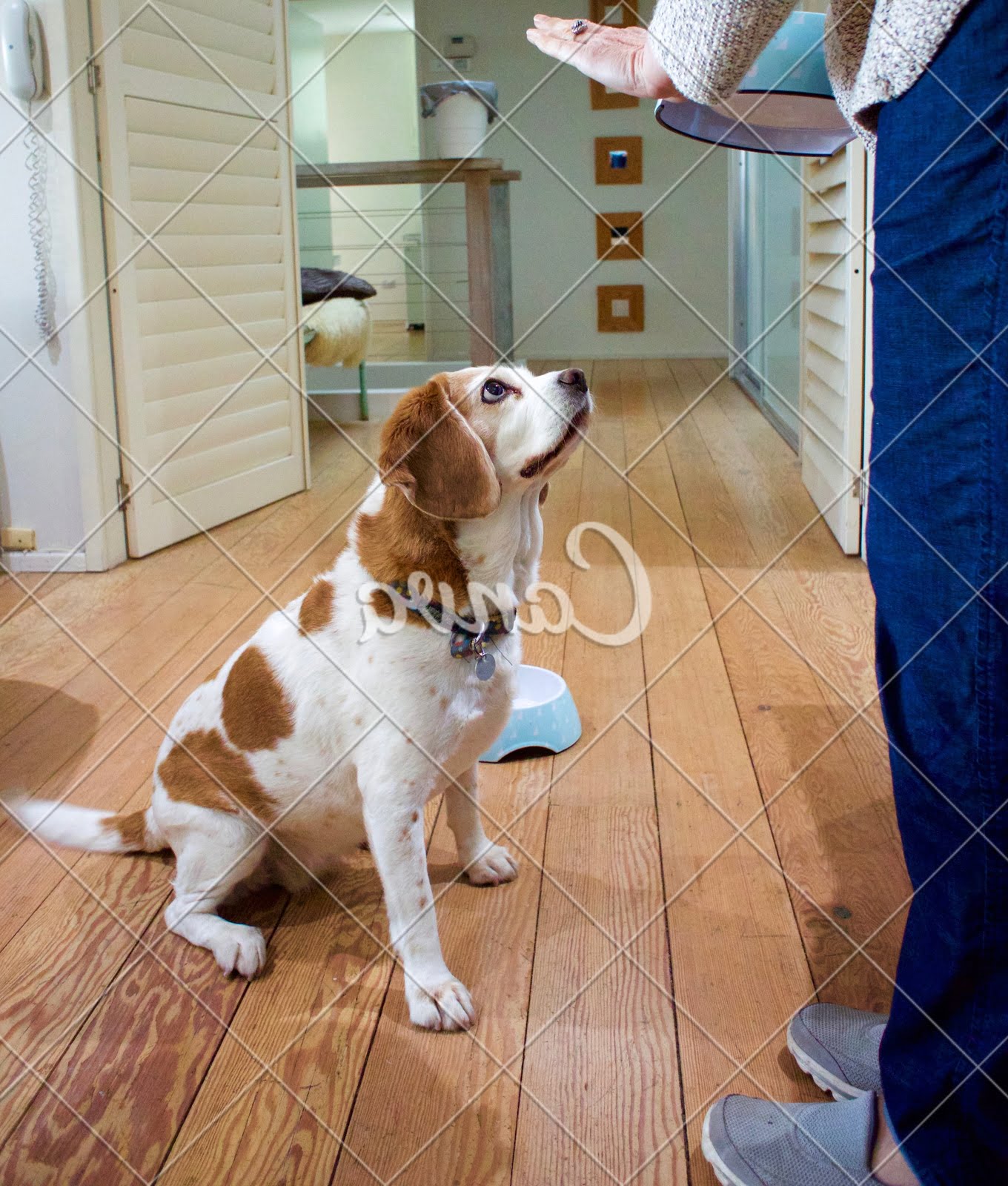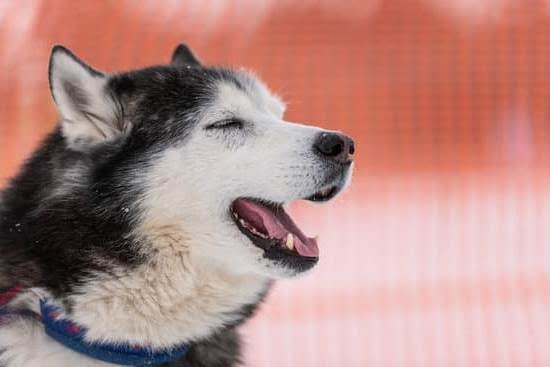Potty training dogs is an essential aspect of pet ownership, ensuring a clean and comfortable environment for both the dog and its human companions. Understanding the importance of potty training is crucial in establishing a successful and harmonious relationship with your canine friend.
In this article, we will delve into the various aspects of potty training, including getting started, the basics of teaching your dog where and when to go potty, different housebreaking methods, addressing common challenges, establishing consistency and discipline, using positive reinforcement, and being patient and persistent throughout the process. Additionally, we will explore special considerations for puppies, older dogs, and specific breeds to help you navigate the unique challenges they may present in potty training.
Getting started on the journey of potty training requires adequate preparation of your home and yourself as a pet owner. It involves understanding your dog’s behavior patterns, learning how to communicate effectively with them, and creating a conducive environment for successful potty training. The Basics section will focus on the fundamental principles of teaching your dog where to go potty and when it is appropriate to do so.
As we continue, we’ll explore different housebreaking methods that are commonly used in potty training dogs. Each method comes with its own sets of advantages and disadvantages, catering to different lifestyles and preferences.
Furthermore, we’ll discuss common challenges that you may encounter during the process and provide practical tips for overcoming these obstacles. Finally, by emphasizing the importance of patience and persistence along with positive reinforcement techniques, this article aims to guide you through this essential aspect of caring for your furry companion.
Getting Started
Before you start potty training your dog, it’s important to prepare your home and yourself for the process. One of the first steps is to create a designated potty area for your dog, whether that’s a specific spot in the yard or a pee pad indoors.
This helps establish consistency and reinforces where your dog should go potty. Additionally, make sure to remove any lingering scents from previous accidents in the house, as these can confuse your dog and slow down the training process.
Aside from preparing your home, it’s also crucial to mentally prepare yourself for the task ahead. Potty training dogs requires patience, persistence, and a positive attitude. There will be accidents along the way, but staying calm and consistent with your training will yield better results. It’s also helpful to educate yourself on different housebreaking methods and choose one that aligns with your lifestyle and the unique needs of your dog.
Lastly, ensuring that you have the right supplies on hand can make a big difference in potty training success. From treats for positive reinforcement to cleaning products for accidents, having everything you need at the ready will streamline the process and minimize stress for both you and your dog.
| Preparation Steps | Key Supplies |
|---|---|
| Create designated potty area | Treats for positive reinforcement |
| Remove lingering scents | Cleaning products for accidents |
| Mentally prepare yourself | Pee pads or specific potty area |
The Basics
Teaching your dog where and when to go potty is a crucial aspect of potty training. Dogs are creatures of habit, and establishing a consistent routine for bathroom breaks is essential in guiding them towards good potty behavior. Whether you have a puppy or an older dog, the principles of potty training remain the same, although the approach may vary depending on their age and prior training.
One important aspect of teaching your dog where to go potty is choosing a designated spot in your yard or outside area. Consistency is key, so always take your dog to the same spot for their bathroom breaks. This will help them understand that this is their designated potty area. Using a command such as “go potty” can also help reinforce the behavior and signal to your dog what is expected of them in that specific location.
In addition to teaching your dog where to go potty, it’s equally important to establish a schedule for when they should be taken out for bathroom breaks. Puppies, in particular, have small bladders and may need to go out more frequently than adult dogs. As a general rule of thumb, puppies should be taken out every 1-2 hours, as well as after meals and playtime.
Older dogs may also need frequent bathroom breaks, especially if they have any health issues that affect their bladder control. Understanding the specific needs of your dog and being proactive in taking them out at regular intervals will contribute to successful potty training.
Consistency, patience, and praise are essential elements in teaching your dog where and when to go potty. By creating a designated potty area, sticking to a consistent schedule, and providing positive reinforcement when they go potty in the right place, you are laying the foundation for good potty habits and contributing to a happy and healthy relationship with your furry friend.
Overall, teaching your dog where and when to go potty requires commitment and dedication from the owner. By understanding these basic principles of potty training dogs and implementing them consistently, you can set your pet up for success in developing good bathroom habits. Remember that every dog is unique, so it’s important to adapt these strategies based on your pet’s individual needs and behaviors.
Housebreaking Methods
When it comes to potty training dogs, there are a few different approaches that can be used to effectively teach your furry friend where and when to go potty. Each method has its own advantages and drawbacks, so it’s important to consider your dog’s unique personality and needs when choosing the right approach for them.
Here are some common housebreaking methods for potty training dogs:
- Crate Training: Using a crate or kennel to confine your dog when they are not supervised can help prevent accidents and encourage them to hold their bladder until they are taken outside.
- Paper Training: This method involves teaching your dog to eliminate on a specific type of paper or pee pad in a designated indoor area, which can be particularly useful for owners who live in apartments or have limited outdoor space.
- Bell Training: Teaching your dog to ring a bell when they need to go outside can be an effective way to communicate their potty needs, especially for dogs who may have trouble vocalizing or signaling when they need to go.
Before beginning any housebreaking method, it’s important to consider your dog’s age, breed, and individual preferences. Some dogs may respond better to one method over another, so it may take some trial and error before finding the most effective approach for your canine companion. Remember that patience and consistency are key factors in successful potty training.
In addition to these methods, it’s important to remember that positive reinforcement plays a crucial role in the potty training process. When your dog successfully goes potty in the appropriate place, be sure to reward them with praise, treats, or affection.
This positive association will encourage them to continue exhibiting good potty behavior. By understanding these different housebreaking methods and utilizing positive reinforcement techniques, you can help ensure a smooth and successful potty training experience for both you and your beloved pet.
Common Challenges
Potty training dogs can be a challenging task, and it is not uncommon to encounter obstacles and setbacks along the way. One common challenge that dog owners face is accidents inside the house, even after consistent training efforts. It’s important to remember that potty training takes time, and setbacks are a normal part of the process. Understanding the common challenges and knowing how to address them can help keep you on track towards successfully potty training your dog.
Another common challenge in potty training dogs is dealing with stubborn or resistant behavior. Some dogs may take longer to understand and follow the potty training rules, while others may simply refuse to cooperate. In these cases, patience and persistence are essential. Consistently reinforcing good behavior and redirecting your dog’s attention when necessary can help overcome resistance during the potty training process.
It is also common for dog owners to struggle with identifying their dog’s signals for needing to go potty. Every dog has unique behaviors that indicate they need to relieve themselves, such as sniffing around, circling a specific area, or restlessness. Understanding these signals and being attentive to your dog’s behavior can help prevent accidents inside the house. Additionally, establishing a consistent routine for potty breaks can also help reinforce good habits in your dog.
| Common Challenges | Addressing Obstacles and Setbacks |
|---|---|
| Accidents inside the house | Understanding that setbacks are normal and part of the process |
| Dealing with stubborn or resistant behavior | Patience and persistence are essential in overcoming resistance |
| Identifying your dog’s signals for needing to go potty | Understanding unique behaviors indicating a need to relieve themselves |
Consistency Is Key
When it comes to potty training dogs, one of the most crucial elements for success is consistency. Dogs thrive on routine, and establishing a consistent schedule for potty breaks can make a world of difference in their understanding of where and when to go potty. Here are some key strategies for establishing a routine and maintaining discipline in your potty training endeavors:
1. Set a regular feeding schedule: By feeding your dog at the same times each day, you can also predict when they will need to eliminate waste. This will allow you to take them outside at the appropriate times to encourage good potty behavior.
2. Designate a specific potty area: Whether it’s a spot in your yard or a designated pee pad indoors, having a consistent place for your dog to go potty will help reinforce the behavior you want to see. Make sure this area is easily accessible and always clean to encourage your dog to use it.
3. Stick to a regular walking schedule: If you’re using outdoor potty breaks as part of your training method, make sure to take your dog out for walks at consistent times each day. This will help regulate their biological clock and give them ample opportunities to relieve themselves.
By maintaining consistency in these areas, you can help your dog understand what is expected of them when it comes to potty training. Remember that accidents will happen, but sticking to a routine and maintaining discipline will ultimately lead to success in this important aspect of caring for your furry friend.
Positive Reinforcement
Potty training dogs can be a challenging task, but using positive reinforcement techniques can make the process more effective and enjoyable for both you and your furry friend. Positive reinforcement is a method of training that involves rewarding desired behaviors with treats, praise, or affection to encourage their repetition. When it comes to potty training, this approach can help your dog understand where and when they should go potty, leading to quicker and more consistent results.
Choosing the Right Rewards
When using positive reinforcement for potty training, it’s important to choose the right rewards for your dog. Most dogs are motivated by food, so small, tasty treats can be an effective tool for encouraging good potty behavior. You can also use verbal praise and affection as additional rewards to reinforce the desired action. The key is to find out what motivates your dog the most and use it consistently during potty training sessions.
Timing Is Crucial
In order for positive reinforcement to be effective in potty training, timing is crucial. When your dog successfully goes potty in the designated area, immediately praise them and offer a reward.
This will help them associate the action with the reward and increase the likelihood of them repeating the behavior in the future. Remember that dogs live in the moment, so it’s important to provide immediate feedback for them to make the connection between their actions and the rewards they receive.
Consistency Is Key
Consistency is a fundamental aspect of positive reinforcement when potty training dogs. Make sure that every member of your household follows the same reward system and uses consistent cues and commands during potty training. This will help your dog understand what is expected of them and minimize confusion or mixed signals. Additionally, be patient and persistent with positive reinforcement as it may take some time for your dog to fully grasp the concept of proper potty behavior.
Patience and Persistence
Setting Realistic Expectations
When it comes to potty training dogs, it’s important for pet owners to understand that this process takes time and effort. Just like with humans, learning a new behavior doesn’t happen overnight. It’s essential to set realistic expectations and be patient throughout the entire potty training journey. Remember that accidents will happen, and setbacks are normal. By approaching potty training with the right mindset, you can reduce frustration and successfully guide your dog towards good potty habits.
Consistent Reinforcement
One key aspect of understanding that potty training takes time and effort is consistent reinforcement. Consistency is crucial in reinforcing positive potty behaviors and correcting mistakes. This means sticking to a regular schedule for feeding, walking, and bathroom breaks. Additionally, consistently using the same commands and cues during potty training will help your dog understand what is expected of them. By maintaining persistence in your approach and reinforcing good behavior regularly, you can help speed up the potty training process.
Seeking Professional Help
For some dog owners, understanding that potty training takes time and effort may also involve seeking professional help. If you find yourself struggling with the process or facing specific challenges with your dog’s potty habits, don’t hesitate to consult with a professional dog trainer or behavior specialist.
They can provide personalized guidance and support to help you overcome obstacles in the potty training journey. Seeking professional assistance demonstrates persistence in wanting to give your dog the best chance at successful potty training.
Special Considerations
Potty training dogs is an essential aspect of pet ownership, but it can be especially challenging when dealing with puppies, older dogs, or specific breeds. Each of these situations comes with its own set of considerations and potential obstacles that pet owners need to be aware of.
When it comes to potty training puppies, it’s important to remember that they have smaller bladders and may not have full control over their bodily functions. This means that they will need more frequent bathroom breaks and may have accidents indoors. As a pet owner, it’s crucial to be patient and consistent in reinforcing good potty behavior. Additionally, crate training can be a helpful tool in teaching puppies where and when to go potty.
On the other hand, older dogs may require a different approach to potty training due to potential health issues or established habits. It’s important to consult with a veterinarian to rule out any medical conditions that could be contributing to accidents in the house. Additionally, older dogs may not have the ability to hold their bladder for extended periods, so providing more frequent bathroom breaks is essential.
Specific dog breeds also present unique challenges when it comes to potty training. For example, smaller breeds tend to have smaller bladders and higher energy levels, requiring more frequent bathroom breaks and consistent reinforcement of good potty behavior. On the other hand, certain large breeds may take longer to mature physically and mentally, impacting their ability to understand potty training cues.
Understanding these special considerations and tailoring your potty training approach accordingly can help set your dog up for success in learning where and when to go potty. By taking into account the unique needs of puppies, older dogs, and specific breeds, pet owners can effectively address any obstacles and ensure a smooth transition into proper potty habits.
Conclusion
In conclusion, potty training dogs is a crucial aspect of responsible pet ownership. By understanding the importance of potty training and implementing the right techniques, dog owners can create a clean and comfortable environment for both their pets and themselves. It is essential to prepare for the process by setting up the home and being mentally ready for the challenges that may arise. Teaching dogs where and when to go potty requires patience, consistency, and positive reinforcement.
Housebreaking methods may vary depending on the dog’s breed, age, and individual personality. It’s important to address common challenges in potty training such as accidents and setbacks with perseverance and understanding. Establishing a routine, maintaining discipline, and using rewards and praise are all key components of successful potty training. Additionally, acknowledging that potty training takes time and effort allows dog owners to approach the process with realistic expectations.
Puppy owners, individuals with older dogs, and those with specific breeds may need to consider special tips for effective potty training. By taking all these factors into account, dog owners can work towards having a well-trained pet that contributes to a happy and healthy home environment. Ultimately, potty training dogs is an investment in creating a strong bond with your pet while ensuring a harmonious coexistence.
Frequently Asked Questions
How Long Does It Take to Potty Train a Dog?
The time it takes to potty train a dog can vary depending on the breed, age, and individual personality of the dog. Typically, it can take anywhere from a few weeks to several months to fully potty train a dog.
How Do You Stop a Dog From Peeing and Pooping in the House?
To stop a dog from peeing and pooping in the house, consistency is key. Establishing a regular feeding and walking schedule can help regulate their bathroom habits. Positive reinforcement for going outside and properly cleaning any accidents inside can also be helpful.
At What Age Should a Dog Be Fully Potty Trained?
Dogs are usually considered fully potty trained by the time they reach six months to one year of age. However, some dogs may take longer to fully grasp potty training, while others may catch on quickly. It’s important to be patient and consistent throughout the process of potty training a dog.

Welcome to the blog! I am a professional dog trainer and have been working with dogs for many years. In this blog, I will be discussing various topics related to dog training, including tips, tricks, and advice. I hope you find this information helpful and informative. Thanks for reading!

